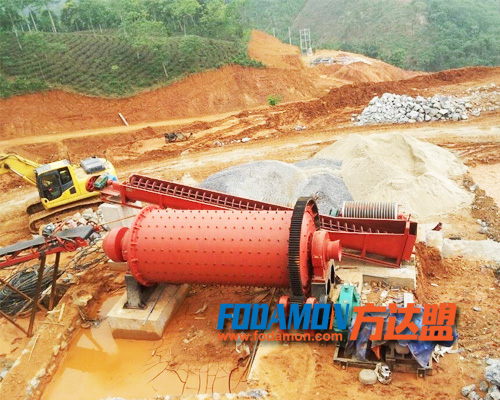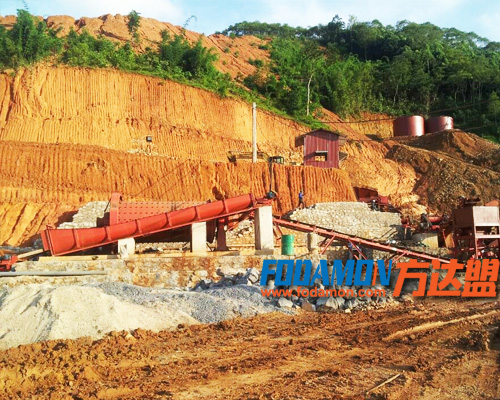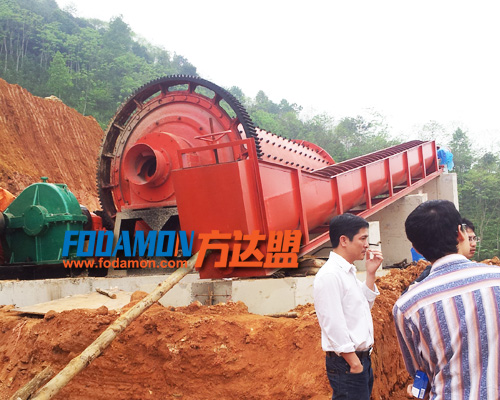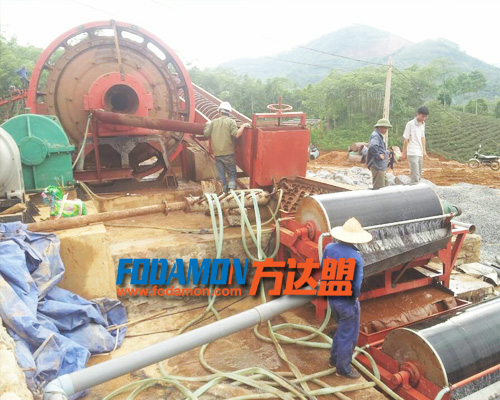Most of the useful minerals and gangue minerals are closely combined. Therefore, before high-efficiency separation, it is necessary to solve the problem of dissociation of the target minerals and gangue minerals. After the minerals reach monomer dissociation, qualified products can be obtained through separation operation. At present, grinding classification is a common and effective way to solve the problem of dissociation of target minerals and gangue minerals.

Beneficiation operation is composed of three stages: pre beneficiation, separation and post beneficiation. As a follow-up process of crushing and screening, grinding and classification operation is also the last process before separation. Only by grinding the mineral particle size to the required range through the ball mill, and separating the qualified and unqualified products through the classification equipment, can the whole pre beneficiation operation be completed.
So what are the classification methods in grinding and classification operation? Fodamon engineer will explain to you five grading equipment is commonly used.

- Pre classification
In general, pre classification will not be used before the first grinding, only when the feeding particle size is less than 6-8mm and the content of qualified products in the feeding is more than 15%. The main function of pre classification in the process is to pre separate the qualified products of the ore, so as to increase the processing capacity of the grinding machine, or to separate the secondary slime for further processing.
- Full closed circuit grinding inspection and classification
The function of full closed circuit grinding inspection and classification is to control the particle size of grinding products. The classification returns to increase the ore throughput per unit time of the grinding machine and improve the production capacity of the grinding machine, but the circulation load of the returned sand will affect the production capacity of the grinding machine.
The inspection and classification in the first grinding and the second grinding can make the grinding machine work effectively, avoid over grinding and meet the grinding fineness requirements of the next grinding operation. Therefore, it is always necessary to check the grading operation.

- Overflow control classification
In the first stage of grinding, very fine final products must be obtained, or in the first stage of grinding, when stage separation is to be carried out, or classification is to be used, overflow control classification operation must be adopted first when too coarse particles are removed in the mechanical classifier.
- Sand return control classification
The purpose of sand return control and classification is to reduce the content of qualified products in sand return. Although the effect is not very significant, and it needs to be added to increase the complexity of configuration, it is still used in practice.

- Inspection and classification of local closed-circuit grinding
The inspection and classification of local closed-circuit grinding is not only the inspection and classification of the first stage grinding, but also the pre classification of the second stage grinding. The main feature of the classification process is that the load change of the second stage grinding machine is not through overflow, but through grit settling, so the load between the two stages grinding machines is easy to be distributed and adjusted. However, there are also disadvantages in the classification process. A lot of slime is removed in the first stage of classification, which greatly reduces the amount of slime in the second stage of classification, reduces the viscosity of pulp, and makes the classifier unstable.
